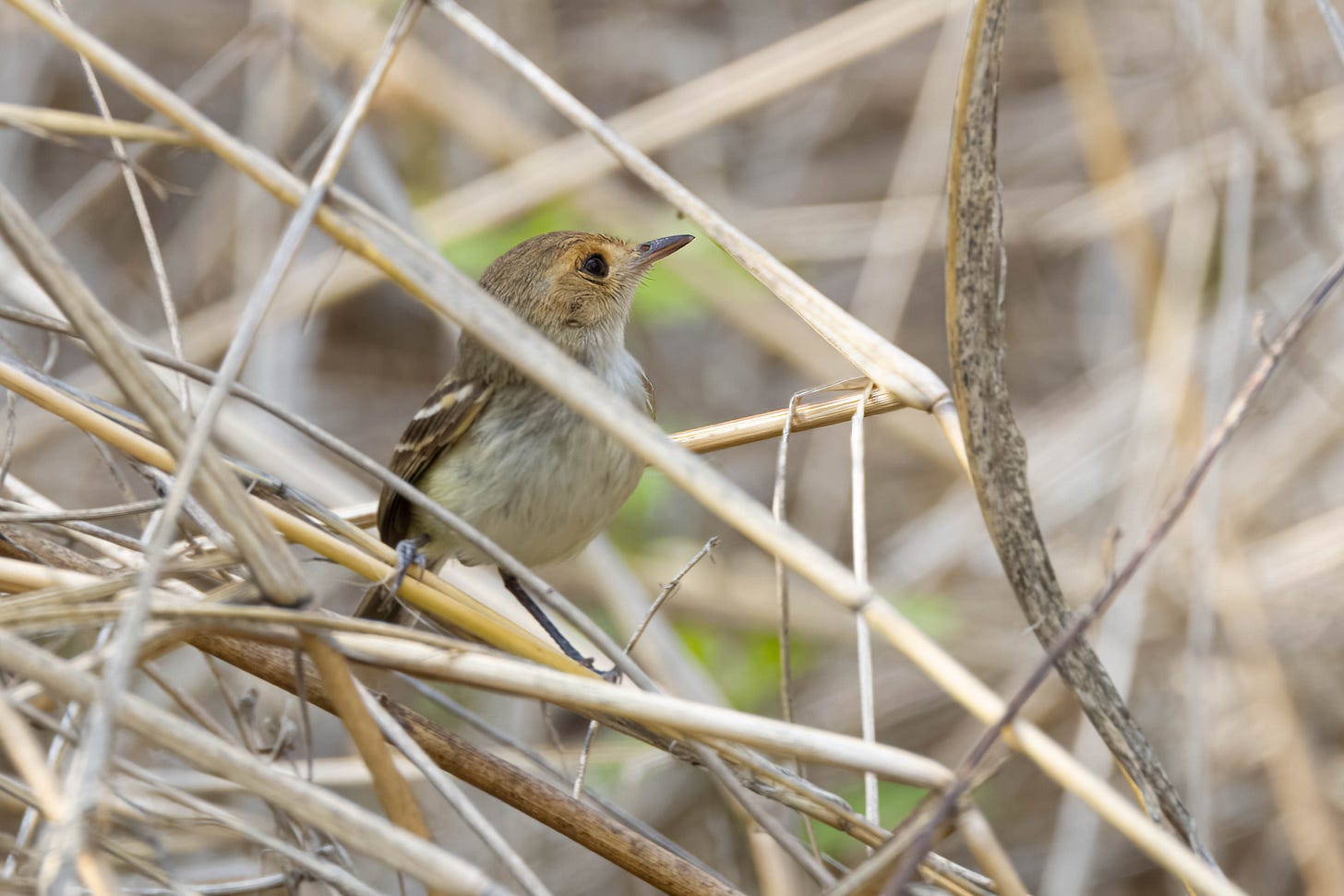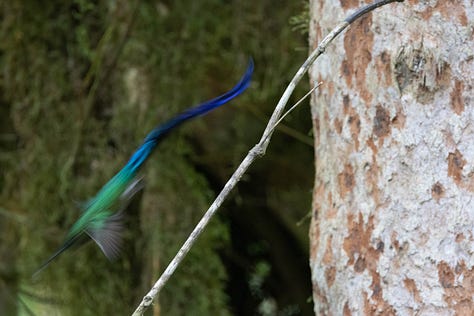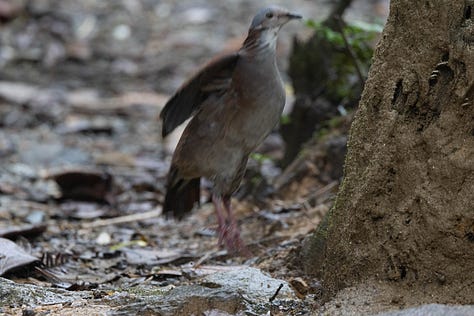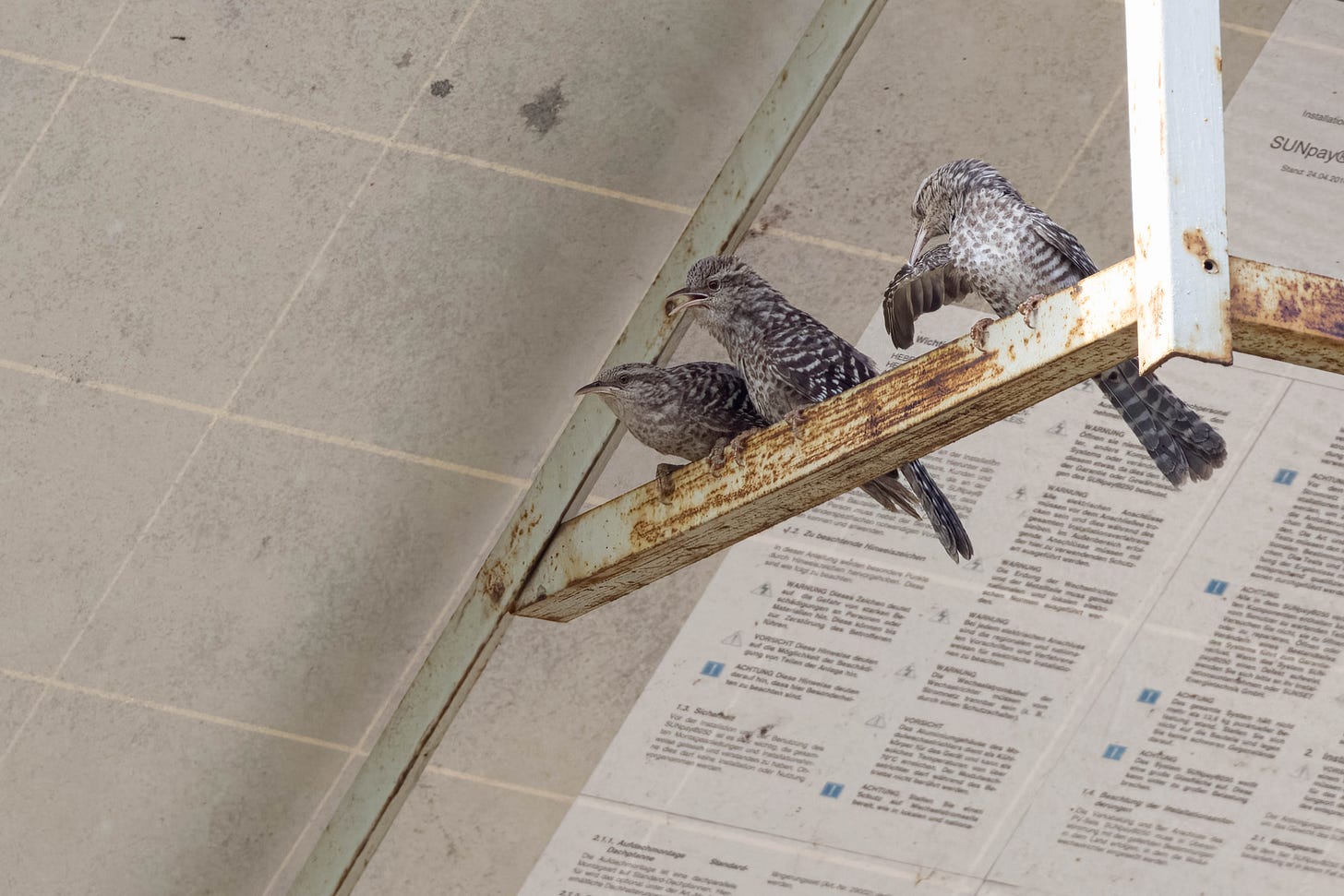
nature doesn’t stop at city limits — that’s my whole thing. cities often sit on estuaries, migratory flyways, or other important areas for wild plants and animals, and are equally as worthy of a naturalist’s attention. but when i go on vacation, especially a tropical vacation in search of new birds, the “cities aren’t nature” mindset is hard to shake as i try to maximize my time spent in “real nature.”
guayaquil, ecuador’s second largest city, shook me of that mindset real quick. because inside guayaquil’s limits, several preserves protect some of the most endangered habitats in the world.
when i woke up in guayaquil on the first morning of my ecuadorian vacation last month, i wasn’t thinking deeply about these things—i was just strapped for time and eager to go outside. i couldn’t get my rental car until 8am, i’d coordinated to pick up my travel companion, gabriel willow, at 10am from the airport, and rush hour traffic meant that the bigger forest preserves were 45 minutes away. so instead, i defensive-drove across town to the bosque protector la prosperina, a central park-sized patch of dry forest on the campus of a public university, escuela superior politécnica del litoral (aka espol). i just figured it was the closest place i could see a nice variety of birds quickly.

i parked at the reserve’s entrance across the street from the school’s tennis courts, and kicked around a stretch of low, dry shrubs interspersed with a few larger, green-buttressed ceiba trees. i spotted a respectable 31 species of bird in 45 minutes, plus a large weasel called the tayra, then pulled myself away so gabriel wouldn’t have to wait. i thought it was a nice morning, but didn’t consider things further than that. while i’d learned to identify hundreds of birds for the trip, i focused on how likely i was to see them at certain locations, rather than think big-picture about scarcity or range maps. plus, i was city birding—how unique could the birds really be?
imagine my surprise, then, when i flipped through my field guide to review what i’d seen. fasciated wren, restricted to dry forests in ecuador and northwesten peru. ecuadorian ground-dove, restricted to dry forests in western ecuador and northwestern peru. ecuadorian piculet, restricted to dry forests in western ecuador and northwestern peru. black-capped sparrow, restricted to dry forests in western ecuador and northwestern peru. fulvous-faced scrub-tyrant, restricted to dry forests in western ecuador and northwestern peru. saffron siskin, rare with less than 10,000 individuals in the wild, restricted to dry forests in western ecuador and possibly in northwestern peru. all of those birds inhabited a one-square-mile patch of forest on a college campus in a city of 2.7 million.
the birds were special because the habitat was special. bosque protector la prosperina protects a patch of ecuadorian dry forest, a unique and isolated ecoregion with 77 endemic bird species that stretches across western ecaudor and northwestern peru. this habitat is under extreme pressure from human development. just 30% of its original area remains, and the rest is highly fragmented.
what makes the ecuadorian dry forests so special? well, the andes mostly trace the west coast of south america, but cut further inland around western colombia, western ecaudor, and northwestern peru. this left an isolated patch of tropical lowlands where two forest types formed: moist evergreen forest in colombia and northwestern ecuador, and dry deciduous forests in western ecuador and peru. these lowlands host an extreme amount of biodiversity, with thousands of plant and animal species, including over 900 bird species. many of those species are found nowhere else in the world.

both of these forest types are threatened by agricultural interests. drive around western ecuador and you'll encounter few natural areas, just miles and miles of sugarcane and banana plantations plus fields cleared for cattle grazing. and there’s generally less conservation interest in the dry forests: only around 10% of total tropical ecology research is on dry forest, and while things are improving, it’s still about one dry forest paper for every four rainforest papers, according to one recent paper. thus, while the dry forests are under more deforestation threat than the wet forests, only 13% of the remaining area of ecuadorian coastal dry forests is protected, versus 28% of the wet forest.
there are organizations who recognize the importance of these forests and are attempting to preserve them. for example, the fundacion jocotoco runs the jorupe dry forest preserve where we spent a few days, plus dry forest reserves at la balsas, ayampe, and elsewhere to protect more range-restricted species. that work is co-funded by other conversation organizations around the world, like the american bird conservancy. but of course, climate change and illegal deforestation continues to pose a challenge. that, and connecting fragmented patches of habitat can be as important as protecting them.
la prosperina represents one of several dry forests in guayaquil’s city limits, including cerro el paraiso and cerro blanco. with the ecuadorian dry forest so under threat, it’s cool that a few good examples of the habitat sit within the city limits to show off to cityfolk and visitors. but it’s about more than education; every patch of these habitats is important. there have even been sightings of the critically endangered great green macaw—specifically the even more critically endangered ecuadorian subspecies—in guayaquil’s urban dry forests. removing these small habitat patches could push that and other threatened species closer to extinction.
again, cities don’t exist separately from nature. i certainly feel that way about new york city—that’s why i write this newsletter in the first place. but it was cool to see what that means in a country so famous for its biodiversity.
postscript
soap box time: central park, like guayaquil, is important bird habitat. my biggest pet peeve is people who treat that park like an isolated zoo, rather than considering it as migratory stopover habitat connected to a broader ecosystem. every worm that birds don’t eat during that stay could be the difference between successfully crossing the gulf of mexico and dying in the attempt. related: flaco the owl is a zoo animal who belongs in a zoo, not flying around important bird habitat.
anyway, i’m back from vacation! this is the first of two posts i plan to write about the trip, but i won’t be doing a full-on recap—that lives on ebird here for your perusing pleasure.
you can find my best pictures and bird highlights scattered across my various social media accounts, so i won’t re-post the best photos. instead, here’s a gallery of outtakes that i probably won’t post anywhere but really like (click for full screen)









